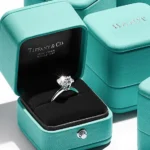Some goods are as well known as the businesses that manufacture them. For instance, a bottle of soda with a red label and a white script type is easily identified as Coca-Cola. Or if you have a chance to hear someone say on the radio, “You’re not you when you’re hungry,” you’ll know right away recognize that they’re referring to a Snickers bar.
These are simple illustrations of product branding, which refers to the name and character that companies give their goods.
In the broadest sense, branding is the process of differentiating a product in the market from other products. A stronger brand strategy will make the product stand out more.
In this blog post, we will explore the concept of product branding in more detail, including its definition, importance, and key elements. We will also discuss some tips and best practices for creating a strong product brand that resonates with your target audience.
What is product branding?
Let’s begin with a definition of product branding.
Product branding is the creation of a unique brand for a specific product with the goal of reaching a company’s target market.
Everything can have its own brand positioning and marketing plan, including vehicles, confectionery, and household cleaning. Whatever the product, the goal is the same: to stand out in a sea of alternatives and persuade them to choose yours.
Products may profit from brand creation to foster trust and boost sales, just as a business develops its corporate brand to win client loyalty. Your brand’s identity extends to your product, so when you do a good job of product branding, your company benefits as well.
Corporate Branding Vs Product Branding?
A single product represents brand marketing in its most basic form. It uses the company name in its branding since the two are one and the same. Things get entangled when businesses have more than one product or brand.
Mars is a prime example. The firm manufactures a variety of goods, such as Whiskas cat food, Skittles, and M&Ms. The company’s brand strategy places more of an emphasis on innovation and being a recognized leader in its industry, while each of its product brands has a distinctive brand identity.
Corporate branding is significantly more comprehensive and includes the whole organization as well as all of its goods. You use this for your company’s website and marketing.
Product branding has become increasingly sophisticated and specialized for each product. A product’s niche differentiation is the objective.
Some businesses decide to establish brand families, where all of the products—regardless of their differences—share the same corporate name. With its extensive lineup of soups sold under the Campbell’s label, Campbell’s is a fantastic example of a brand family. With the addition of its range of Campbell’s Chunky, Well Yes!, Slow Kettle Style, and Homestyle Soups, the business has also grown into a multi-brand business.
However, employing a single brand or a brand family may be challenging for businesses that offer a wide range of goods, such as diapers and cleaning supplies. Because of this, businesses like Procter & Gamble choose to use distinct product brands.
Product brands often have some connection with the corporate brand. The main distinction, however, is that product brands are distinct from the business that manufactures them in terms of their appearance and personality.
Is Product Branding Worth the Investment?
Yes, without a doubt: investing in product branding to some degree is worthwhile.
Why? Since you want to increase product sales!
To set your product apart from the competitors, use product branding.
Additionally, you are expanding or focusing the market on the precise demographic you want to target.
Lack of product branding investment will result in a sea of uninteresting, poorly marketed items.
Your sales will demonstrate this.
The main issue isn’t whether spending money on product branding is worthwhile. How much money should you devote to product branding?
And a lot of it will rely on the size of your business and the brand’s margins.
Global megacompanies spend a lot of money on product branding, which is not very complicated. Startups are much more frugal.
However, we’ve all seen instances of brands that ought to have spent more, aren’t we? We’re talking about product names that are unclear and have amateurish-looking logos.
Pros and Cons of Product Branding
It seems reasonable that the parent company’s brand should be the first focus for most business owners. Selling things gets a lot simpler if you are successful in establishing a favorable reputation for the business.
Nevertheless, there are benefits and drawbacks to developing both corporate and product brands.
Benefits of Branding for Products
The popularity of your brand in the market where you’ve decided to compete indicates how popular your brand is compared to those of your main rivals. Although this doesn’t represent actual purchases, it’s a very good indicator of how consumers perceive your brand and how likely they are to make a purchase.
1: Products Are Differentiated For Consumers
Have you ever visited a website for a company that offers a variety of services but makes it tough to decide which one is ideal for you?
That’s because the company didn’t employ product branding very successfully, if at all.
By giving each of your items a unique brand, you can easily tell them apart from one another, which simplifies the purchase process.
The simpler you make it for your consumer to purchase a thing, the more probable it is that they will actually do so.
2: Hyper-Targeted Messaging And Positioning
The positioning and message of a company’s brand must be flexible enough to appeal to a larger target demographic with probable diverse demands and interests.
To satisfy the demands of various market groups, many brands provide a variety of goods and services.
While still aligning with the parent brand, product branding enables messaging that speaks more directly to those who are most likely to make purchases.
3: Unique Visual Identity
Product branding gives a portfolio of goods the chance to stand out visually from one another.
Within their Adobe Creative Suite, Adobe does this well. Despite the fact that all of the icons have a similar appearance and feel, their distinctive picture styles and brand color palettes help to make them stand out from the crowd.
Product packaging is a potent illustration of product branding in the consumer world. If you have any doubts about this assertion, consider your most recent trip to the supermarket:
Simply because you were familiar with the label or color scheme, you most likely chose a product without even looking at the brand name.
4: Facilitates Brand Advocacy
I purchased a set of Sony Wireless Earphones last year.
They are superb. They still serve me today.
Yet… I’m not sure what they go by.
Even though I connect them with my gadgets every day, I can’t remember the product’s name since it is so difficult to pronounce.
(For the record, the designation is MX-C0013… or anything absurd, as many items with a similar function have).
Of course, for the sake of this essay, I could seek up the brand name, but it would negate the argument I’m attempting to make.
It would be difficult for me to suggest a set of wireless earbuds to a friend. However, if I had been using AirPods, it would have been.
Sony completely wasted this chance to increase market share and brand recognition.
Drawbacks of Product Branding
Although there are many benefits to product branding, there are also many reasons not to brand your products, so it’s not always an option.
1: Connected reputations
Branding for products might be a little shady. In essence, the parent brand’s connection with your brand’s goods connects them. In a house of brand architecture, where brands are managed independently (such as how Unilever manages both Dove and Axe), this risk can be minimized.
However, where there is a closer connection between the products, a problem with one product brand can harm the standing of the parent brands that are connected to it.
How to Improve Your Product Branding Plan
Several different factors come together to form product branding, including the company’s logo, colors, package design, names and descriptions of the products, brand voice, brand values, brand narrative, and general messaging. The total of its pieces, which is calculated strategically, is bigger than the whole.
Are you prepared to create a plan for product branding? Here is our best advice for successful product branding:
Investigate Your Audience
Market research is the first step in every new branding plan. To build a brand that appeals to them, you must first define who you want to purchase your goods. During this process, you may want to consider asking the following questions: • What is the product’s purpose?
- Who is likely to utilize the product?
- Why would they choose this product over one made by a rival?
- What does this audience value?
- Why do I want to serve them?
Obtaining consumer insights is crucial for the growth of your brand since it puts you in the position of the target market. In order to identify the genuine problems that customers have and determine how a great product and powerful brand may address them, conduct surveys or access data.
Be Aware of the Competition
Your capacity for standing out is crucial to effective branding. Marketers must first identify the competitors vying for exposure before they can take action. Perform a competitive analysis. Learn what consumers think of competing brands and what can convince them to switch to yours (e.g. better pricing, higher quantities, product quality, etc.). These will be some of the pillars of your approach to product branding.
Define the Character of Your Product
What would your company’s branded items say if they could talk? Who knows how they might sound? odors like? Feel like?
A brand is made up of a variety of connections, sounds, scents, sensations, and visual cues. Choosing logos, colors, packaging, and other characteristics that customers will use to recognize your brand may be influenced by defining your company’s personality.
Promoting Your Brand Identity
Once you have a clear understanding of the ideal appearance and functionality of your product brand, you can begin telling your audience about it. Discuss its history, its principles, and what makes it special. Make your brand seem personal to the audience so they get comfortable with it. Give them a reason to choose it above alternatives, in other words.
Keep Your Product Branding Consistent
Consistency is the one constant in any product branding strategy, regardless of how you go about it. Create a style guide that specifies the dimensions, positioning, color scheme, basic principles, visuals, and voice that should be used to represent your brand. Your online store, the product’s customer service, your business cards, and any online marketplaces where the product is offered should all follow the same design guidelines.
In all of your marketing and advertising, convey the identity of your brand. Your brand gets more recognizable the more consistent you are. Additionally, the quicker individuals can connect with your brand.
Examples of Effective Product Branding
Want some ideas for your next product brand? Check out these inspirational examples of high-impact product branding.
Joe on the street is undoubtedly familiar with several product brands, even if he would not claim to know anything about the phrase “Product Branding.”
Here are a few to consider.
Coca-Cola Product Branding

Unquestionably, one of the items with the greatest global distribution is Coke. The brand is virtually present in every corner of the world.
However, despite Coke’s size, there are still limits to the portion of the soft drink market share it can capture because, quite simply, not everyone enjoys or desires to drink Coke.
Coke has developed a portfolio of product brands, including Sprite, Fanta, and Powerade as a great example of good product branding, in order to both maintain the brand equity of Coke and grow its market share.
Nestle
When people think of Nestle, they often associate it with chocolate bars and milkshakes. However, Nestle has a diverse portfolio of products, each with its own unique brand. One such example is Nestle’s San Pellegrino drink, which has a distinct brand identity separate from Nestle itself. With its refreshing appearance and elegant bottles, San Pellegrino stands out among other brands of refreshing beverages.
By creating a separate brand with San Pellegrino, Nestle was able to establish a new image for its products that feels natural and exotic. The brand gives the impression of being a family-owned company located in a sunny, distant place. This enhances the appeal of the beverages and adds to their perceived premium quality.
San Pellegrino serves as an excellent illustration of how a product branding strategy can help a company differentiate its new products from its existing brand image. The comprehensive approach to product naming and branding contributes to the overall allure of the drinks.
Nike Product Branding
Phil Knight knew very less about golf, soccer, or eyewear when he founded the little track and field shoe firm Blue Ribbon.
The Nike brand moved to product branding for flexibility and precise targeting to communicate more directly to specialized demographics when Blue Ribbon underwent a rebranding to become Nike and started growing into several sports and lifestyle categories.
One Nike product brand that, by itself, has developed a cult following is the Air Max.
FedEx

FedEx is another corporation that has a specialized multi-branding strategy. FedEx Express, FedEx Ground, FedEx Freight, and other services are available under the FedEx Corporation umbrella.
Each of these services has the “FedEx” brand name and is emblazoned with the distinctive FedEx emblem. To better distinguish them, the “Ex” element of the designation sometimes adds its own color.
FedEx can provide a variety of services while retaining a consistent business identity thanks to its multi-branding strategy. By combining distinctive images, colors, and descriptive terminology such as “FedEx Smart Post,” businesses may successfully differentiate and express the numerous services they provide to clients.
Apple Product Branding
To streamline the Apple brand and its product portfolio, Steve Jobs canceled 70% of the projects that were in development when he returned to Apple in 1997.
What remained was a simplified portfolio of product brand names that greatly facilitated customer decision-making and the development of a product’s reputation.
Even while Apple now offers far more items, they are all well-branded, from names to designs. You have a smartphone, a tablet, a desktop computer, a laptop, and a watch in the main lineup. All of these products appeal to the same target audience and are developed under one brand identity, making it easy for a die-hard Apple fan to have all of their electronics in the same shade of space grey. And let’s not forget about Apple’s iconic logo design.
Despite being launched from the equity of Apple’s reputation, their individual product brands are still recognized in the market as distinct entities. These include:
iPhone
iMac
Apple MacBook
iWatch
iPad
McDonald’s Product Branding
Although MacDonald’s rolls out new products at a breakneck pace, many of which are limited editions, some have evolved into the pillars of the industry’s leader in the fast food industry.
The Big Mac continues to remain McDonald’s flagship product, even if many of their favorites are distinctively identified as such by the mere “Mc” before the product name, from McNuggets to the McChicken Burger and everywhere in between.
Adobe Product Branding
Adobe may not be a household name, but it is for brand designers all around the world.
It offers a wide range of products that each provide users with unique powers and makes use of various skill sets.
Without using product branding to differentiate between them, it would be quite simple for Adobe to confuse their clients by offering everything from Photoshop to Indesign and everywhere in between. Each product may establish its own reputation in specialized markets because of its distinctively colored icons, visual style, and other brand assets, which also make it simple to distinguish among items.
Ford Product Branding
Ford is a company with a rich history that has been operating for so long that it was part of the shift from horses to automobiles in the transportation sector. In the words of Henry Ford, “If I had asked people what they wanted, they would have said faster horses.”
The history of Ford includes a lot of iconic vehicles. But few possess the Mustang’s beauty and sentimentality. The Mustang is a product brand that stands out on its own thanks to appearances in films like Steve McQueen’s “Bullet” and “Gone in 60 Seconds” on the big screen.
Levi’s Product Branding
When I was growing up in the 1990s, everyone in my small portion of the world wore, or at least desired to wear, Levi’s jeans.
However, Levi’s brand wasn’t sufficient on its own. They possessed a 100-year-old product brand that had established the standard, passed muster, and won favor. Just owning a pair of Levi’s wasn’t sufficient. You have nothing if you lacked 501s.
Final Thoughts on Product Branding
Effective product branding is essential for creating a strong market presence and customer loyalty. A well-crafted brand identity, messaging, and positioning can differentiate your product from competitors and create an emotional connection with your target audience. Consistency in branding across all touchpoints reinforces your brand’s values and identity, making it memorable and recognizable. By understanding the elements of effective product branding and following best practices, businesses can build a brand that resonates with consumers and drives success.






![What Is Brand Repositioning? [Strategies & Examples]](https://naumandigital.com/wp-content/uploads/2023/10/WhatsApp-Image-2023-10-24-at-12.51.24-PM-600x400.jpeg)

![Brand Architecture: [Strategies and Tips]](https://naumandigital.com/wp-content/uploads/2023/02/3-2-600x400.jpg)
![What is business strategy [Levels, Components, Examples]](https://naumandigital.com/wp-content/uploads/2023/02/2-600x400.jpg)